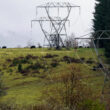I’ve just returned from the Olympic Track and Field Trials and the only thing I’m sorry about is that I didn’t go last time, in 2008.
(And no, this column isn’t going to be just about sports, so if you’re not into athletics, press on.)
I’ve been kicking myself a little during four years since the last trials. Though I greatly enjoy sports, and I’m particularly fond of track, I didn’t go last time because it was pricey to get the whole family in – I would have been dead meat if I’d gone by myself – and the Trials happen during what is always a particularly busy time for our newspaper staff.
But my family did make a quick stop in 2008 at the Trials courtyard area, which is open to the public and includes a wide range of interactive activities for both adults and kids, free samples and vendors. As the stadium crowd roared behind us, I realized what I was missing. So I vowed I’d make it a priority this year.
It was worth it.
Though our local athlete, Dakotah Keys, had to drop out due to an injury by the time I and a couple of my daughters got there on Saturday (see page 11), I was reminded again of how fortunate we are to have people in our area who think big and have taken the steps necessary to make their goals happen.
The very fact that the Trials are being held down the road is a result of that.
It’s a great show. The courtyard is back and it’s worth the trip down just to visit that and get a sense of the atmosphere. You have to get past a security check to go in, but you don’t have to have a ticket and you can watch the action on the track on a couple of large monitors.
Track and field has not always been well-packaged in the U.S., particularly on TV, but the organizers of this year’s championships have done an excellent job of bringing in past champions and generally educating anybody who doesn’t already know what’s going on so they can enjoy it.
We got to see Ashton Eaton, who grew up in Bend, deliver an historic performance in the 1500-meter run to set a world record in the decathlon. A packed stadium of 21,795 screaming people, and the two of his fellow competitors who are better distance runners than he is, helped him beat that record. It was one of those goose-bump moments as he staggered (rapidly) down the home stretch, clearly running out of gas.
I’ve heard that when Oregon athletes swept the men’s 800 final four years ago, the crowd was so loud that patrons in a restaurant three blocks away from the stadium felt the building shake. Wonder how that compared to Saturday?
Oregon (the university and the state) is well-represented this year. We have competitors in many of the events, including Galen Rupp of Portland, who led a sweep of the 10,000-meter berths by Oregon athletes on Friday night and Ryan Bailey, who went to McKay High School in Salem. Bailey made the Olympic team in the men’s 100 meters Sunday. Former Oregon athlete Becky Holliday is going in the pole vault, Oregon Track Club Elite athlete Jesse Williams in the high jump, and there are and will be more.
In addition to Eaton’s performance, we got to see the closest finish (for an Olympic berth) ever, in the women’s 100, when Allyson Felix and Jeneba Tarmoh crossed the line at exactly the same time. Witness it yourself in the finish photo at http://yfrog.com/z/nz93craj .
But again, this isn’t just about track.
What we’re seeing in Eugene is successful utilization of local resources to do something that produces economic benefits to the local community – many of those 20,000 people are staying in Eugene hotels and eating in Eugene restaurants. They’re buying things (tax-free) in Eugene stores. They’re paying for Eugene services.
This is exactly what Sweet Home is working towards – certainly not on a scale that Eugene has, but with plenty of potential nevertheless. This summer, as we reported a couple of weeks ago, we have thousands of Oregon Jamboree fans, hundreds of Girl Scouts, classic car buffs and Sweet Home High School alumni, dozens of water polo players, masters-level open-water swimmers, triathletes and motorcyclists converging on Sweet Home for various events. The firefighters are here now and the car show fans will be Saturday.
It’s pretty clear that we can’t depend on the local forest products industry returning to what it once was, at least not in the foreseeable future, though efforts are being made to improve the health of the forests and local wildlife in a way that will benefit Sweet Home economically.
But what the organizers of many of the events above have recognized is that we are one sweet place to bring visitors and we need to take advantage of that.
You know the merchants and citizens of Eugene are putting up with, and benefiting from, the inconveniences that come along with staging a show like the Olympic Trials – streets blocked off, more traffic, etc. But the payoff is in dollars and community promotion. Eugene is putting on a great show and it is being noticed, on TV and beyond.
If our community buys into our local events and makes visitors feel welcome, serves their needs and helps them have a great time, who knows what could happen next and how we could benefit from that?




